MONEY
Where are you going to go without money?
Unless you’re planning on bugging out to the wilderness in Alaska or some other wild frontier with just the clothes on your back and a way to hunt for game and live off the land, you’re going to need money to buy the things you need to live off the grid. Especially if you’re going to bring your family.
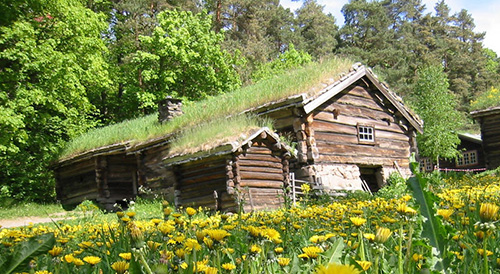
The fact is, to do anything nowadays you need money, and usually lots of it. Otherwise, you’re stuck in the poorhouse, renting, living paycheck to paycheck, and barely making ends meet. To do anything significant usually takes money.
There’s a whole list of things you need besides money, that money will buy you as you prep for your move off grid.
LAND
First and foremost, you’ll need a place to go. A place that has WATER! (more on this below)
A place to go seems obvious at first glance, and people know this of course. But it’s not that easy. Finding the “right” off grid property is tough. When picking to “perfect” location to live off grid there are certain things one must take into account.
Consider first, the fact you will be OFF GRID. Meaning you will be producing your own power, most probably from wind and solar.
So, when choosing the perfect location, you have to find a place which has good sun, moderate wind, and which is close enough to other resources to make living off the grid safe, comfortable and manageable for your family and yourself.
If you have children, you must consider your land’s location in relationship to schools, hospitals, shopping, and entertainment. If you’re married, you must consider your spouses family as well as yours. Most places that are suitable for off grid living, are far away from cities proper, and most probably even further away from the in-laws. Which could be a plus. (Don’t tell your spouse I said that.)
Important things to consider when shopping for the perfect off grid location, is deeded access, mineral and water rights.
Who owns the mineral/water rights? Are they included in the purchase price? Can an agreement be made with the owner of mineral/water rights to purchase those as well if they are not included in the deed?
Do your homework NOW, and make sure you get those rights, because later they will be worth their weight in gold.
(NOTE: When purchasing land, MOVE ON to another property if you cannot get mineral/water rights included in the deed/purchase, or if it becomes too complicated; There’s plenty of other land out there which does include these rights, and when it comes down to it, you’ll probably be glad you did your homework later).
Finally is zoning and county/city ordinances. The land you purchase must be open to alternative building methods such as strawbale, earthbag, cob, adobe, log, modular, manufactured, etc. Permitting, building codes, covenants, restrictions, and many other legal hurdles are out there. Just spend some time looking this information up in the area you are searching for property.
It’s tough to find a place that has everything you need, but doing your homework NOW before you buy your property will save you time and money in the future.
Typically, the rule of thumb is, the further outside any city proper your land is located, the less you will have to worry with strict building/zoning issues for your off grid homestead.
SHELTER
While we’re talking about building. You’ll need shelter. A place to get in out of the weather. One which is safe, comfortable, energy efficient, and preferably, inexpensive.
Basic log cabins/homes seem to be the least expensive, and most attractive to most people. RVs, converted buses, earthbag, cob, strawbale, and earthship technology is also available. Yurts, tipis, and other ‘tents’ can be purchased or constructed relatively cheaply and will provide temporary shelter while you build your off grid cabin or earthship.
Recycled shipping containers also make for great temporary, or permanent shelters when modified and improved.
WATER
Buy land which has WATER!
I can’t stress this enough.
Unless you’re planning on hauling your water, purchase property with an existing water source. Either by a well that’s already drilled, natural springs, river, creek, stream, pond or lake. You absolutely need water. UNLESS of course you have a way to extract it from the air. Human beings can live for weeks without food, but, without water we die in a matter of days.
FOOD
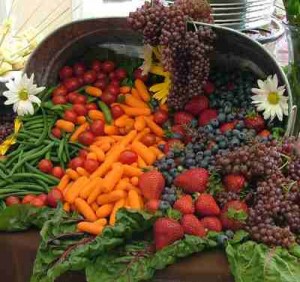 While setting up your off grid homestead you will need to eat.
While setting up your off grid homestead you will need to eat.
Most people I know who want to live off grid plan on growing their own food, fruits and veggies. It takes time to grow food, and the fastest crops will grow in a few weeks to a month. 30 days is a long time to go with no food. So you’ll have to figure out a way to survive at least the first 30-60 days, perhaps even 90 days before the first real harvest.
So, what are you going to eat for 90 days? This is where dry goods and livestock comes in.
Dry goods like rice, beans, oats, etc. are a good starting point. Preserved home canned foods like veggies, jams, jellies, dried fruits and smoked meats will last a while. These foods will provide enough to eat on for the first months on your new homestead.
LIVESTOCK
Livestock, such as chickens, pigs and cows, are good food sources. The meat provides protein, and doesn’t need to be harvested until you’re ready to eat. You can’t get much fresher than that. The only issue is preserving the meat that is leftover, which will require energy if you are going to freeze it.
Here’s some ideas for livestock.
- – Chickens
- – Turkeys
- – Ducks
- – Geese
- – Pheasant
- – Cows
- – Pigs
- – Rabbits
- – Fish(aquaponics)
This is a great diy book about aquaponics
ENERGY
You will most likely power your off grid home with solar and/or wind power. The average American family uses about 11,280 kWh of energy per year according to the U.S. Energy Information Administration.
If you’re living off grid, hopefully you won’t be using that much energy, but frankly, it probably doesn’t matter because you’ll be producing your own CLEAN solar and wind power anyway.
A 1000 Watt solar system with a 500-1000 Watt wind power system can be purchased for about $5000 or so. This seems expensive, but it will last you at least 5 years, probably 10 years, and that cost spread out over 10 years is insignificant when divided by 120 months. There are also tax credits the government will provide you for going solar, which helps offset the cost.
You will need enough energy to power your lights, and your appliances. A typical freezer unit will use approximately 500-800 watts of electricity. Microwaves can range from 500-1500 watts. Your 42″ LCD TV will use approximately 175 watts of power.
Your Laptop computer uses between 25-150 watts depending on your screen and how many programs/windows are open. Desktop computers can use 250-1000 watts each, depending on what type of monitor and power supply unit is powering your computer.
Lights, refrigerators, DVD player, cell phone/chargers, electric and battery powered tools all use energy.
SEPTIC
We must properly dispose of our waste. It’s gross I know, but it’s a fact of life. Some people will opt for a composting toilet system. However, this might not be legal in your neck of the woods depending on zoning/ordinance restrictions and code enforcement in the county your property is located.
Lets just say you will most probably have to have at the very least, a large portable RV type septic system which can be emptied on a monthly or quarterly basis. Which is an extra cost, but probably still cheaper than building a septic system from scratch which can run upwards of $10k-25k including permitting, perc testing, and hiring the licensed contractors to do it for you.
If you are the type to build your own septic system, you might consult with your county planning/zoning office, and ask if they allow owner/builder variances when installing your septic system.
SEEDS & CUTTINGS
To grow your food, you must have the seeds to start your garden. These are relatively inexpensive, and a $100 worth of good heirloom seed packs should be good enough to start a very nice sized garden with lots of varieties.
Again, harvest for certain crops will be a minimum of 30 days on out to 60-90 days. Some crops take longer, some shorter growth periods. But figure 3 months.
If you’re growing in a greenhouse, it’s possible to grow year round.
MATERIALS
This is the nuts and bolts, screws and lumber, metal, hoses, wire, cable, fencing, tape, rope, and a myriad other supplies you will need to build and complete repairs around your off grid homestead.
TOOLS & EQUIPMENT
If you’re building your off grid cabin on-site from materials available on your land, you will need many different tools and pieces of equipment. For example, if your lucky enough to own land which has timber, you can save a lot of money by purchasing a small portable sawmill, or making one yourself.
You will of course also need some miscellaneous hand and power tools, like a hammer, wrenches, screwdrivers, drill, drill bits, a circular saw, hacksaw, lawnmower/tractor, plow, welder, cutting torch, grinder, saw horses, wheelbarrow, rake, shovel, hoe, machete, misc. knives, post hole digger, sledge, volt meter, etc.
***
This list is not all inclusive nor is it designed to be a comprehensive essay. It s simply a short list of things that everyone will need if they are realistically considering living off grid.
COMMITMENT
Yes, it takes money, time, planning, preparation, but most of all, it takes commitment.
A serious commitment to living your life off the grid, unplugged from the burdens (and luxuries) of our system. You must be willing to stick to it. To do it. And to make sure you have everything you need before you take that step. Then, once you take that step, you can;t get tired and quit. You can’t pack your things and go home. It’s not a vacation. It’s a lifestyle change.
Don’t get me wrong, I’m not trying to discourage anyone from going off grid. In fact I wish 50% of our population would go off grid now. The money and energy and environment that would be saved if half our population decided to live off grid would be phenomenal.
I simply want you to think about what you really need to go off grid, and ask yourself if you could do it.
Could you do it with minimal resources? Sure. Could you do it with no money? Sure. If you weren’t going to buy land or any of the necessities you need for your family. If you were by yourself, and didn’t need to consider anyone else, sure.
I could go right now and live off the land, on federal land, becoming a nomad, moving around, becoming one with nature. It would be an adventure. It would be fun. It would be difficult. But it’s not realistic, nor is it responsible. I have a family and a job to consider.
Most people have responsibilities, jobs, family, and bills they must consider before making the move off grid.
The biggest and most important thing you need is a commitment to the lifestyle.
Are you committed?
Are you ready?
Source: offgridworld.com
Want to be as self-sufficient as possible? Want to master all the lost skills our grandfathers had? Then you really need this amazing step-by-step guide. It is called The Lost Ways and it contains all the knowledge of our forefathers.
Here’s just a glimpse of what you’ll find in The Lost Ways:
From Ruff Simons, an old west history expert and former deputy, you’ll learn the techniques and methods used by the wise sheriffs from the frontiers to defend an entire village despite being outnumbered and outgunned by gangs of robbers and bandits, and how you can use their wisdom to defend your home against looters when you’ll be surrounded.
Native American ERIK BAINBRIDGE – who took part in the reconstruction of the native village of Kule Loklo in California, will show you how Native Americans build the subterranean roundhouse, an underground house that today will serve you as a storm shelter, a perfectly camouflaged hideout, or a bunker. It can easily shelter three to four families, so how will you feel if, when all hell breaks loose, you’ll be able to call all your loved ones and offer them guidance and shelter? Besides that, the subterranean roundhouse makes an awesome root cellar where you can keep all your food and water reserves year-round.
From Shannon Azares you’ll learn how sailors from the XVII century preserved water in their ships for months on end, even years and how you can use this method to preserve clean water for your family cost-free.
Mike Searson – who is a Firearm and Old West history expert – will show you what to do when there is no more ammo to be had, how people who wandered the West managed to hunt eight deer with six bullets, and why their supply of ammo never ran out. Remember the panic buying in the first half of 2013? That was nothing compared to what’s going to precede the collapse.
From Susan Morrow, an ex-science teacher and chemist, you’ll master “The Art of Poultice.” She says, “If you really explore the ingredients from which our forefathers made poultices, you’ll be totally surprised by the similarities with modern medicines.” Well…how would you feel in a crisis to be the only one from the group knowledgeable about this lost skill? When there are no more antibiotics, people will turn to you to save their ill children’s lives.
And believe it or not, this is not all…
Table Of Contents:
Making Your Own Beverages: Beer to Stronger Stuff
Ginger Beer: Making Soda the Old Fashioned Way
How North American Indians and Early Pioneers Made Pemmican
Spycraft: Military Correspondence During The 1700’s to 1900’s
Wild West Guns for SHTF and a Guide to Rolling Your Own Ammo
How Our Forefathers Built Their Sawmills, Grain Mills,and Stamping Mills
How Our Ancestors Made Herbal Poultice to Heal Their Wounds
What Our Ancestors Were Foraging For? or How to Wildcraft Your Table
How Our Ancestors Navigated Without Using a GPS System
How Our Forefathers Made Knives
How Our Forefathers Made Snow shoes for Survival
How North California Native Americans Built Their Semi-subterranean Roundhouses
Our Ancestors’Guide to Root Cellars
Good Old Fashioned Cooking on an Open Flame
Learning from Our Ancestors How to Preserve Water
Learning from Our Ancestors How to Take Care of Our Hygiene When There Isn’t Anything to Buy
How and Why I Prefer to Make Soap with Modern Ingredients
Temporarily Installing a Wood-Burning Stove during Emergencies
Making Traditional and Survival Bark Bread…….
Trapping in Winter for Beaver and Muskrat Just like Our Forefathers Did
How to Make a Smokehouse and Smoke Fish
Survival Lessons From The Donner Party
Get your paperback copy HERE
CHECK OUR survival and prepping solutions
If you found this article useful, please like our Facebook page and stay up to date with the latest articles.
WHAT TO READ NEXT:
HOW TO MAKE YOUR OWN BACON (STEP BY STEP GUIDE)
A RETURN TO THE OLD PATHS: HOW TO MAKE PEMMICAN LIKE THE NATIVE AMERICANS
20 LOST RECIPES FROM THE PIONEERS: WHAT THEY COOKED ON THEIR JOURNEY WESTWARD
SEVEN CLASSIC GREAT DEPRESSION ERA RECIPES GRANDMA USED TO MAKE
POTTED MEAT: A LOST SKILL OF LONG TERM MEAT STORAGE
BACK TO BASICS: HOW TO MAKE AND PRESERVE LARD
THE BEST WAY TO STOCKPILE VEGETABLES OFF-GRID
OLD FASHIONED PRESERVING-GRANDPA’S RECIPE FOR CURED SMOKED HAM
HOW TO MAKE GUNPOWDER THE OLD FASHIONED WAY
SURVIVAL HERBAL RECIPES FROM OUR ANCESTORS
HOW TO PRESERVE MEAT FOR SURVIVAL LIKE OUR GRANDFATHERS
OTHER USEFUL RESOURCES:
The 3 Pioneer Survival Lessons We Should Learn
The Most Effective Home Defense Strategies
Old School Hacks for Off-Grid Living
The Medical Emergency Crash Course

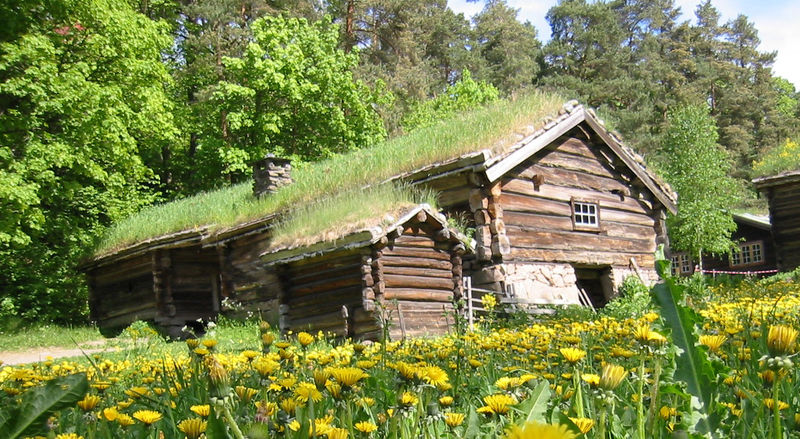
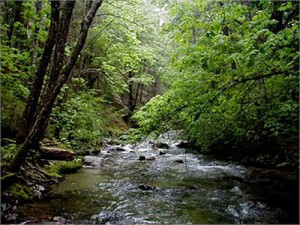
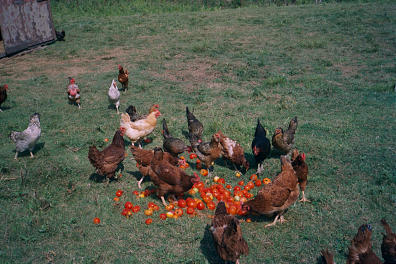
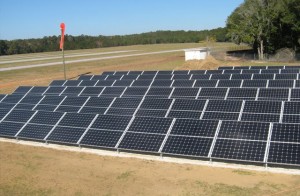
One Reply to “12 Things You NEED To Go Off Grid NOW!”